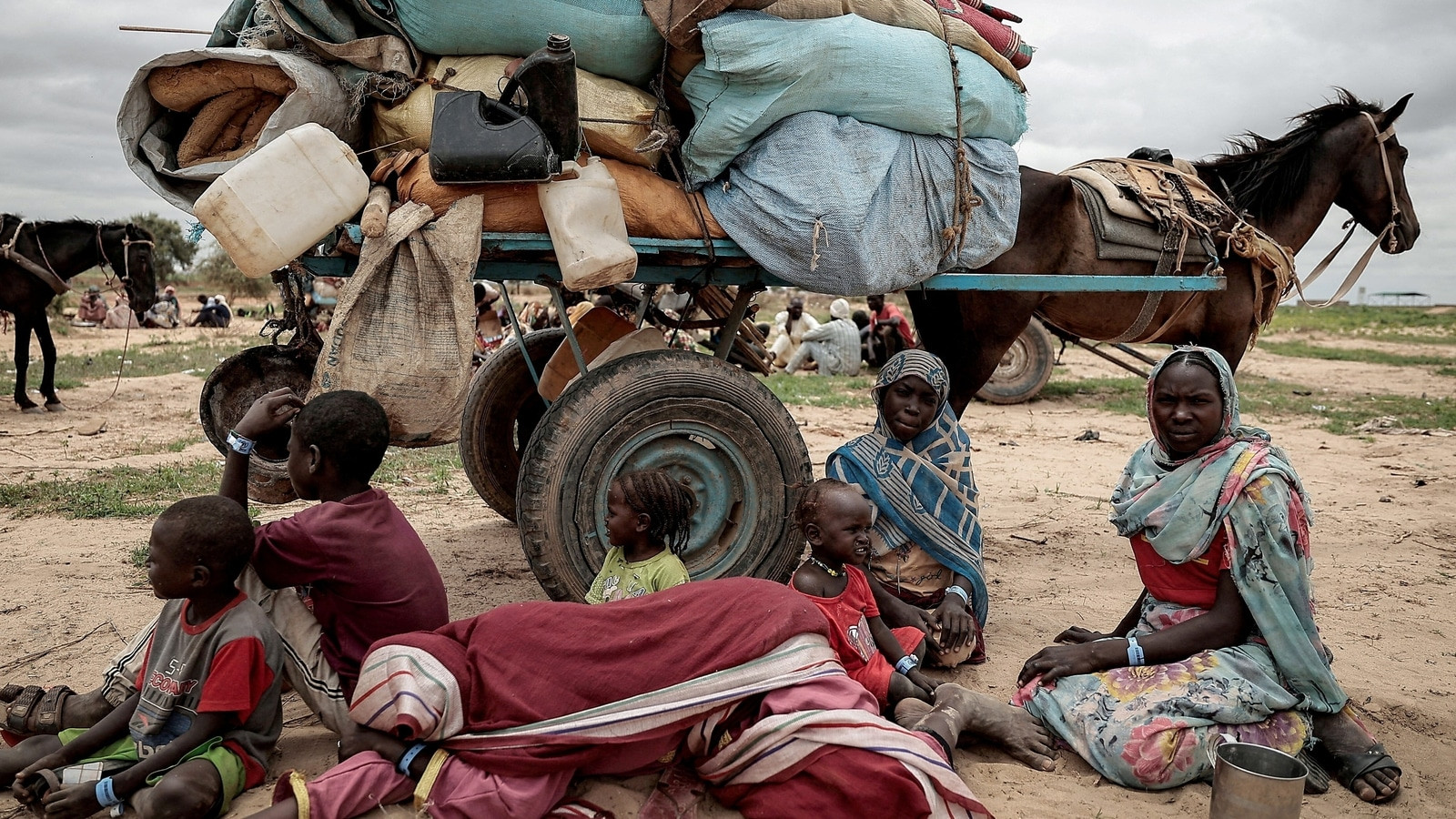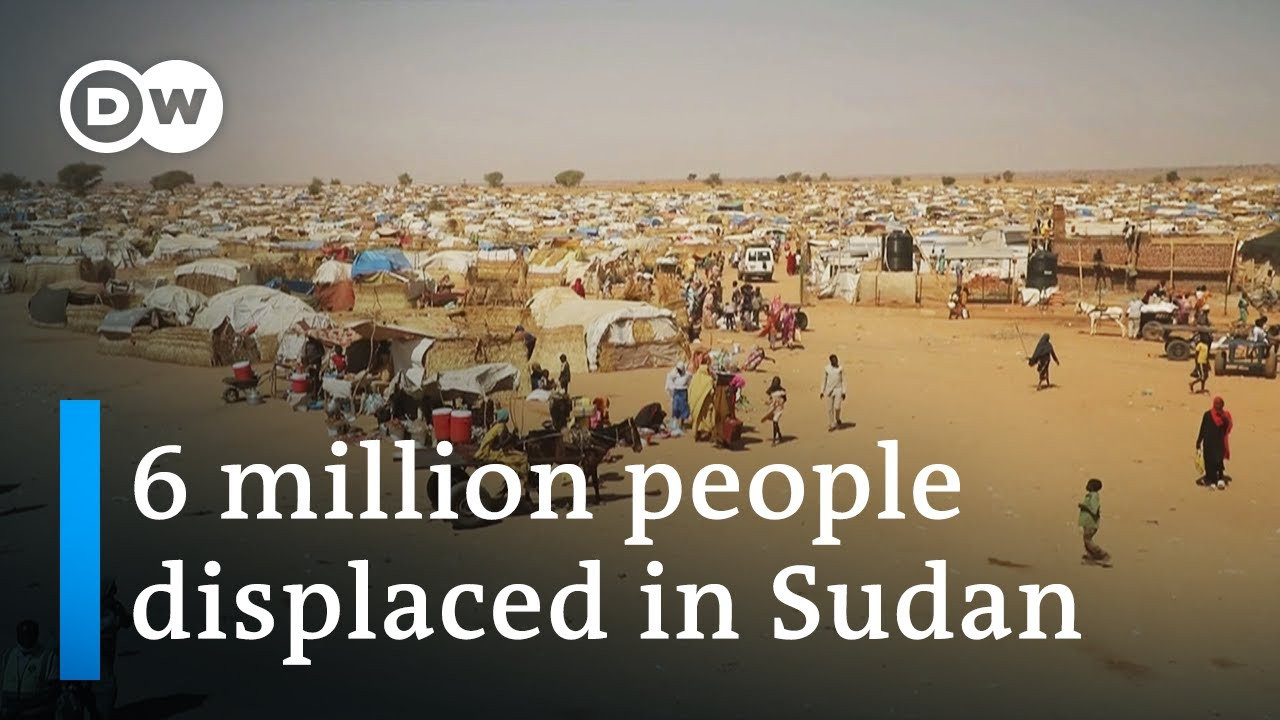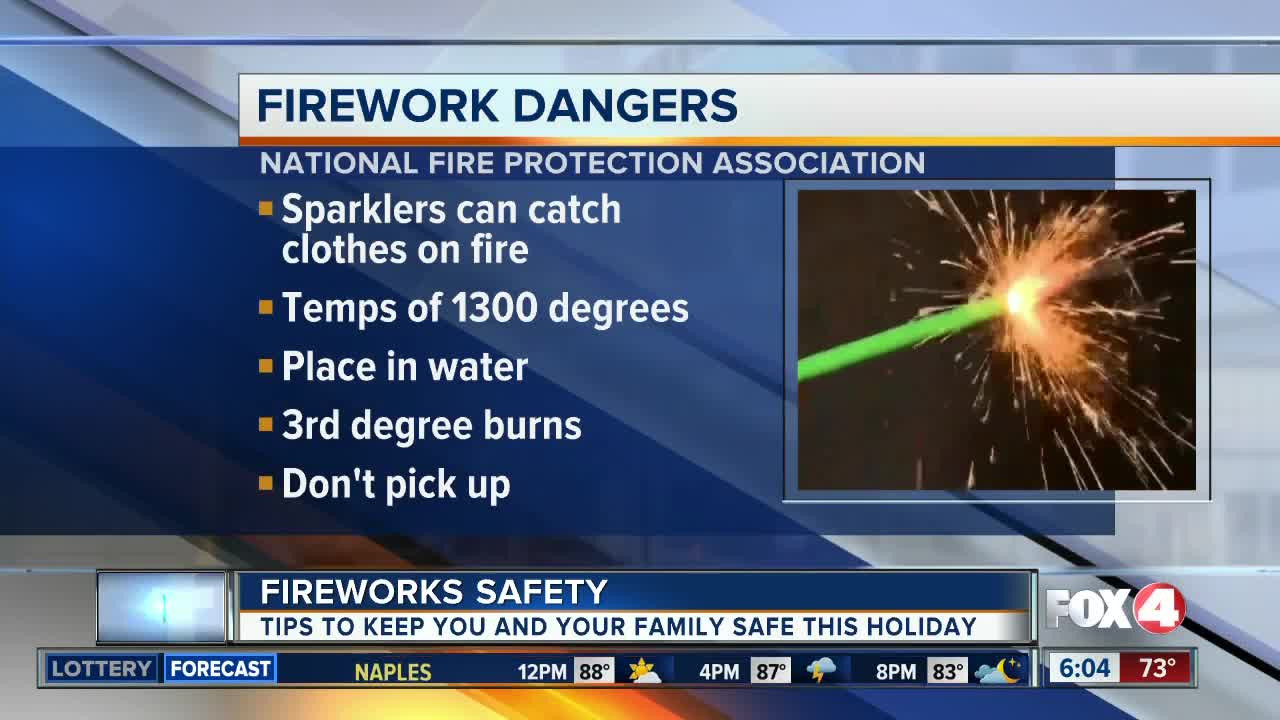The conflict between the Sudanese army and a paramilitary group known as the Rapid Support Forces (RSF) has engulfed the nation. No end is in sight. Fighting appears to be only escalating across all eighteen of Sudan’s states. Its capital, Khartoum, is almost entirely in ruins. The RSF seizure of the city of Wad Madani, a critical supply hub, has suffocated the little external aid civilians were receiving. Health-care systems have collapsed, attacks on women and girls are rampant, and famine is setting in. UN officials have warned that more than two million Sudanese are at risk of death by starvation this fall.
Despite these warnings, many observers are calling Sudan the world’s “forgotten war.” As the humanitarian situation deteriorates, sorely needed aid is not arriving, signaling a historic failure in the global aid system.
“There is no time to lose,” emphasized Clementine Nkweta-Salami, the United Nations’ humanitarian coordinator based in Port Sudan.
Civilian life in Africa’s third-largest country has been completely interrupted by the war, with many essential services becoming a target of both sides, though predominantly the RSF. Houses are being torched, looted, and shelled, driving millions from their homes. Many people have been displaced more than once. Several experts and Sudanese aid workers have said that they think the true total displacement is much higher than the latest official toll of more than ten million.
The country’s hospitals have come under fierce attack, rendering at least 80 percent of health facilities unusable. Fifteen million people are going without critical health care. Both governments and human rights observers have accused combatants on both sides of war crimes for deliberate strikes on civilian infrastructure and other forms of malicious violence.
The lack of clean water and deteriorating sanitation combines with the downed health system to create a “perfect storm” of disease, the World Health Organization (WHO) office in Sudan has said.
Reports indicate that malaria, cholera, measles, dengue, and more are spreading like wildfire. Meanwhile, thousands of Sudan’s patients whose conditions are life threatening when untreated, such as HIV and tuberculosis, have seen their care disrupted.
The United Nations has documented an “alarming” rise in sexual assault and rape on the part of the largely male combatants, the vast majority of them RSF. Many asylum seekers have reported experiencing or witnessing abduction, assault, rape, or other forms of gender-based violence. The Sudan war “is actually a war on women,” the Cooperative for Assistance and Relief Everywhere (CARE) International’s Chief Humanitarian Officer Deepmala Mahla tells CFR.
The violence has also increasingly followed ethnic lines. The Masalit tribe has been a major target of retaliatory violence from largely Arab rival groups such as the RSF and government-allied militias, which have waged a campaign of murder and torture to drive approximately 540,000 Masalit from their homes in the El Geneina region.
Sudan's Looming Famine
The war is also compounding an ongoing and largely man-made famine. Conflict-related disruption of the harvest season, combined with the effects of climate change and the weaponization of food aid by the warring parties has led experts to raise alarms that 2.5 million could die in the country from starvation alone by the end of the summer. The official UN tally of those facing starvation is currently at least 750,000, and another 26.5 million are food insecure, hurtling toward mass famine. In just one displaced persons camp in El Fasher, for example, Doctors Without Borders estimates that thirteen children are dying every day from malnutrition.
Already, 25.6 million people—half of Sudan’s population—are facing a food crisis. Of those, 8.5 million are considered acutely malnourished, and 755,000 are in what aid agencies label a catastrophe, or condition of famine.
Sudan has long been one of East Africa’s biggest agricultural producers. But breadbasket lands have now become battlefields. One refugee transiting major agricultural areas told CFR he saw abandoned farms, machinery paused mid-operation, harvests rotted.
Aid workers say conditions at the camps are dire, and shelter is often hardly more than the loose tarps that function as makeshift tents. Mahla told CFR that many people are only getting one meal a day at refugee camps, often consisting of basic grains or legumes, which lack adequate macronutrients. The Sudanese government has denied that refugee camps are experiencing famine.
“We urgently need food, clean water, good shelter, and medical care,” a displaced mother of five at a camp in Darfur told humanitarian workers. “We are afraid we might lose our children.”
Sudan's Aid Crisis
Global humanitarian groups are struggling to get aid where it is needed. Humanitarian analysis nonprofit ACAPS rates constraints on humanitarian access in Sudan as topping the highest extremes.
One refugee related that a recent trip from Kassala to Port Sudan, a journey of roughly 350 miles, had twenty-two checkpoints, making the movement of supplies stiflingly slow. Trips that would normally take a few hours now often sprawl into several days.
The World Food Program (WFP) said that it has provided assistance to at least 6.7 million people in the war, but its trucks have also been barred from travel, hijacked, and looted by armed groups. In August, WFP launched an investigation into some of its staffers who stand accused of fraud and concealing the role of Sudan’s army in blocking aid deliveries.
Many of the aid workers have become displaced themselves. “We received a number of reports of humanitarian staff who were killed, shot, or injured,” said Emily Beggins, a senior humanitarian officer at U.S. Agency for International Development (USAID). “There was little to do to console our partners regarding the agonizing decisions they were needing to make: to suspend operations, to move their own staff to safety without many assurances.”
In August 2024, the Sudanese government reopened a critical aid channel along the border with Chad that has been down for the last six months—but aid has so far still barely trickled in, and experts say the army is using its control over aid checkpoints as leverage.
Among the few aid groups still active in the country are CARE and the International Rescue Committee (IRC), both offering safe water and other basic health assistance.
This aid, though, pales in comparison to what is needed. The “international community has failed Sudan,” the IRC says. The UN funding goal of $2.7 billion for 2024 has only been 48 percent met.
Why Is Sudan So Ignored?
The funding shortfalls have left Sudanese feeling ignored. WHO Director-General Tedros Adhanom Ghebreyesus has called out the world’s “really low” attention on the issue, in large part due to race, he says.
Other experts, too, point to Western countries’ perceived lack of geopolitical interests in this war. “Not only are African populations keenly aware of the time, resources, and high-level attention directed at crises in Gaza and Ukraine, they are aware of the disparity between that level of effort and concern and the much quieter attempts to address the world’s biggest humanitarian crisis, which is in Sudan,” CFR expert Michelle Gavin says. “This becomes part of a broader narrative about disregard and disrespect.”
It’s not just Sudan. The world is seeing the worst funding gap that the humanitarian system has faced, even as the need is greater than ever. Between 2016 and 2022, the United Nations’ appeals were on average 58 percent funded.
Conflict is by far the biggest factor, with war on the rise, and lasting longer on average worldwide. On top of that are the worsening effects of the climate crisis. Droughts are consuming the Horn of Africa and the Sahel, floods plague Pakistan, South Sudan, and Libya, and agriculture strains drive resource conflict in Nigeria.
Greater damage to infrastructure in these conflicts requires lengthier, more expensive aid responses. In 1999, aid agencies estimated the humanitarian aid system needed $1.7 billion annually; by 2027, some aid forecasters project that it could require more than $100 billion. However, last year, the global amount committed to the United Nations for relief work dropped for the first time since the organization’s 1945 founding.
A Call to Action
Many of the major aid organizations say the most critical priority is to boost this funding. Local support goes even further. Today, just 3 percent of aid worldwide goes to national and local nonprofits, even though they are often more effective than their international counterparts.
One Sudanese aid worker mentioned collecting $1,000 dollars a week at a local food kitchen before the war broke out—now he’s lucky if he gets $50, he says. Sudanese communities working to feed the displaced and provide stopgap health care have proven remarkably resilient despite the violence they face, but their efforts can only go so far without more support. The starkest issue that local groups face, CFR’s Gavin says, is securing this crucial funding.
Meanwhile, the crisis in Sudan is also highlighting a growing problem with the erosion of international humanitarian norms, Gavin continues. International law bans the use of famine as a weapon of war. Yet this practice and other war crimes, according to rights watchdogs, are being committed against the Sudanese people with impunity. Failure by the standard bearers of such laws, such as the UN Security Council, to hold the abusers accountable will likely further erode trust in the multilateral systems responsible for delivering aid.
Meanwhile, in Sudan, the world does not have much time to avert a total collapse, experts say, but the other countries seem unwilling to intervene in the horrors transpiring. “There is this, quite frankly, quite tired and racist idea that Sudan and Africa in general is this place where war is not only inevitable, but perpetual,” Kholood Khair, a Sudanese analyst at Confluence Advisory, said at a CFR event. As a result, she says, the situation there is going ignored by the media.
Mediation efforts beginning in 2023, led by the United States, Egypt, and Saudi Arabia in Jeddah, have been unsuccessful.
In the latest push, Switzerland hosted cease-fire talks in August 2024 that were attended by the United Nations, the African Union, and the East African trade bloc known as IGAD—but notably, participation from both fighting sides was missing, and talks wrapped up without a truce. The Sudanese army leader said that government forces would “fight for 100 years” rather than sit down with the RSF.
These efforts have been complicated by the fact that some outside governments are supporting one of the warring parties. Sudan has become a proxy war for Gulf countries to garner power and influence: the United Arab Emirates is reportedly sending arms to RSF, and both Saudi Arabia and Iran have lent support to the Sudanese army. Egypt, Sudan’s neighbor to the north, is receiving some 750,000 refugees and throwing its weight behind the Sudanese army to help protect strategic interests such as access to the Nile River. Russia has also become involved with both sides at various points, as part of its efforts to boost its influence in Africa.
The more than 2.7 million displaced people who have fled Sudan are placing heavy pressure on already struggling neighboring countries, including the Central African Republic, Chad, Egypt, Ethiopia, and South Sudan. Chad closed its borders to additional refugees; Egypt’s remain open, but reports paint a dismal picture of long wait times, dangerous conditions, and efforts to deport refugees back to harm’s way in Sudan. These countries need massive amounts of aid themselves—the UN refugee agency has asked for another $1.5 billion for Sudan’s neighbors—but it is not yet forthcoming.
Amid this chaos, Sudanese are “desperate for peace,” a humanitarian worker told CFR, arguing that anyone who can be involved in constructively negotiating peace has a duty to do so. Above all, the Sudanese and the workers on the ground ask that the rest of the world “please, keep attention on Sudan,” Mahla says.
Sudan's Hope for the Future
Editor’s note: Names of some migrants and humanitarian workers have been withheld to protect their identities.
Recommended Resources
In this video, CFR expert Michelle Gavin sits down with PBS correspondent Leila Molana-Allen to talk about what they’ve seen on the ground in Sudan.
On The President’s Inbox podcast, Gavin discusses the deadly conflict after one year of fighting.
For CFR’s Africa In Transition blog, Entisar Abdelsadig captures how Sudan’s civil society can lay the groundwork for peace.
For Foreign Affairs, Alex de Waal calls attention to the United States’ role in enabling Sudan’s man-made famine.
For CFR’s Women Around the World blog, Rachel George details the crucial role that women will play in resolving Sudan’s crisis.
Credits
Graphics: Will Merrow and Michael Bricknell


















